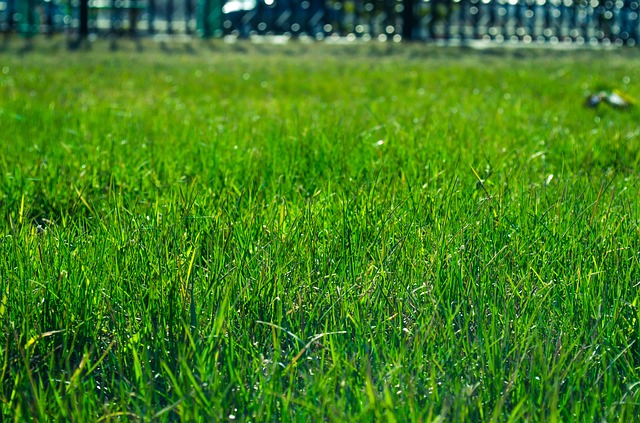In our lives, the grass isn’t always greener on the other side. When it comes to our lawns, your neighbour’s green yard might just spark an uneasy whiff of jealousy. A lawn with uneven grass patches and brown dirt is a sight for sore eyes. Luckily, you can do something about it. SOD Installation has become a common occurrence for homes with yards. It creates an immediate gorgeous looking lawn that doesn’t take too much effort. How does SOD installation work? And what exactly is it? Follow this blog to get all the answers.
What is SOD Installation?
There are a lot of companies like https://mrlawn.ca, grow and harvest grass that can be installed on lawns. Also known as turf, sod is rolls of grass that are held together by a thin layer of soil and roots.
Once harvested, companies install the grass on golf courses, sports stadiums, and yards. By laying down the rolls of turf, it gives the area an even look that is appealing to guests.
Who Uses or Needs SOD?
Turf can be sold to homeowners with big yards who are looking to redo their lawn’s appearance. Typically, professional landscapers will invest in rolls of turf when they are constructing a residential home’s garden.
To avoid soil erosion, homeowners and landscapers lay down turf on areas on which the grass has died. Also, to cover patches of ground that are peering through other parts of the lawn. This not only allows the yard to look great again, but it also allows for a very quick solution.
Having to cultivate and grow grass from seeds is a lengthy process that can take months. Installing sod that has already been cultivated by a grass farm speeds up the process greatly.
Turf installation is best for those who want a quick solution to a dry patch of grass in their yard, want to cover a big area of ground, or who would like a unified look on a big area. But you can also do it on your own, click here for a simple guide in installing an artificial lawn.
Function of SOD
Laying down turf on a sports field or golf course is definitely a crowd-pleaser. Apart from looking gorgeously green, turf installation serves many other purposes as well:
- It increases water and air quality in surrounding areas
- It assists in water drainage
- It prevents flood because of drainage
- Avoids soil erosion because it creates a protective barrier between elements and the soil
- It increases cooling
Interestingly enough, Sod was used to cover houses back in 1862. Settlers of the great plains would use turf bricks to build their homes. This provided heat isolation, better water drainage, and cooling.
Cultivation Process
Before turf farms, consumers invested in large pieces of fake lawn to cover unsightly soil patches. This resulted in overflooding, a foul smell, and a damp environment. With grass cultivation becoming increasingly popular, choosing between artificial grass and a live lawn has never been easier.
Cultivating grass that is ready to be harvested is easier said than done. Creating turf plains that are even in colour and length takes a lot of skill and experience. In the United States alone, there are over 1,400 grass farms that help with the production and cultivation of sod.
The grass is cultivated, grown, cut, fertilized, and clipped. It is harvested between 10-18 months after planted. To keep the pieces of lawn in tip-top shape, farmers won’t use a typical lawnmower but rather a roller mower. After mowing they will vacuum the lawn to remove clippings and any other residue.

Specialized equipment is used to harvest grass. This is to ensure that the product is cut to precision for the consumer’s needs. It can be harvested in either large 1.2-meter (4 ft wide) rolls or small rectangular or square slabs.
Typically, these turf farms are placed locally. This minimizes transport costs and ensures that the rolls aren’t damaged during transport. Consumers do have different requests of grass cultivar, length, and colour; all to which the grass farms can tend to.
When you order turf from a farm, they’ll usually include installation as well. The process can be quite tedious for someone who isn’t trained to do so. Soil needs to be prepared and slabs then have to be placed carefully not to damage the product. Watch this for a clear indication of how the process works.
Different Types of SOD
To serve different purposes, different cultivars of sod are being cultivated. The following cultivars are typically farmed:
* Tall Fescue
Originally from Europe, the tall Fescue is a very commonly used cultivar. It’s perfect for cool weather and can endure drought. Tall fescue can be used on clay soils and is resistant to common lawn diseases.
Tall fescue isn’t suitable for athletic or sports fields as it has a low tolerance to wear.
* Fine Fescues
This cultivar has thin leaf blades and can be mowed at a low height. Apart from its length, it exhibits the most common features like tall fescue.
* Bermuda Grass
This cultivar is very popular to use on sports fields, golf courses, and athletic tracks. Mainly because it has a high tolerance to wear. It forms a dense canopy of tissue that forms a great protective layer between hard soil and athletes.
Investing in professionally cultivated and harvested turf is a great choice for anyone who wishes to take their yard to the next level, or who wish to upgrade their sports fields.
Also read:








